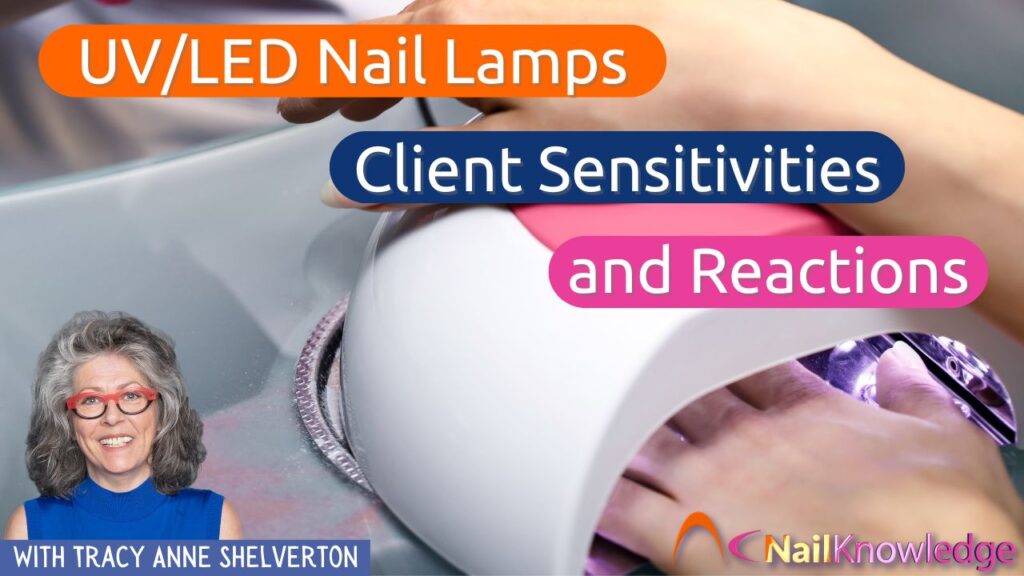UV and LED curing lights have become indispensable tools for achieving long-lasting, glossy manicures. However, some nail technicians encounter clients who report adverse reactions during the curing process, raising concerns about potential allergies to these lights.
This article aims to demystify the issue, clarifying the nature of these reactions and exploring how they are more likely linked to the products used and individual sensitivities rather than an allergy to the light itself. By understanding the underlying causes and implementing mindful practices, nail professionals can enhance client safety and comfort, ensuring a positive experience for those enjoying the benefits of gel-based manicures.
Key Considerations for UV/LED Nail Curing Sessions
When clients experience discomfort or adverse reactions during a UV or LED nail curing session, it’s crucial for nail technicians to understand the possible underlying causes. While it’s uncommon for individuals to be directly allergic to UV or LED light, various factors related to the curing process can trigger reactions. Here are four key points to consider that can help professionals address and mitigate these sensitivities effectively.
Understanding Photosensitivity in Nail Care
Photosensitivity: Some individuals have conditions that make their skin unusually sensitive to UV light, such as polymorphic light eruption or lupus. These conditions can exacerbate skin reactions to UV exposure, whether it comes from the sun or a UV nail lamp. Recognizing these conditions can help nail technicians provide safer, more accommodating services to clients with these sensitivities.
The Impact of Phototoxic Reactions on Nail Treatments
Phototoxic Reactions: Certain medications and topical products can cause phototoxic reactions, where the skin becomes more sensitive to UV light. This increased sensitivity means that while general sunlight might not cause a reaction, the concentrated exposure from a nail lamp could trigger an adverse response. Understanding these triggers is essential for managing client care during nail treatments.
Distinguishing Allergic Reactions in Nail Enhancements
Allergic Reactions: Misinterpretations can occur when clients react to nail treatments. Often, what is believed to be a reaction to the UV/LED light is actually an allergic response to ingredients in gel polishes or acrylics. These reactions are particularly likely if the nail products are not fully cured, resulting in prolonged skin contact with reactive substances. Educating clients about these potential allergens can help prevent misdiagnosis and ensure appropriate measures are taken.
Recognizing Heat Sensitivity During UV/LED Curing
Heat Sensitivity: Discomfort or a burning sensation during UV/LED curing can often be attributed to the heat emitted by the lamp, especially if gel layers are too thick or the lamp’s intensity is too high. Understanding and adjusting the curing process to accommodate clients who are sensitive to heat can enhance the overall experience and safety of nail treatments.
Enhancing Safety in UV/LED Nail Treatments
So, while it’s not an allergy to the light per se, there are various factors related to UV/LED exposure during nail treatments that can cause discomfort or reactions. It’s always a good idea to ensure proper application techniques and to use high-quality, hypoallergenic products to minimize these issues and avoid removing essential skin layers with an efile, it takes away the last valuable layer of skin that is ultimately important for your clients wellbeing.
If a client has a known photosensitivity or skin condition, or is undergoing chemotherapy or immunotherapy its not smart to continue and it is best to recommend alternative nail treatments that don’t require UV curing. There are plenty of other options available you just have to be prepared to look and learn new techniques.
The Importance of Discernment in Nail Product Selection
In a world where artificial nail products appear too beautiful to be problematic, it’s important to recognize when to say no, understand the reasons behind it, and offer alternative options.


